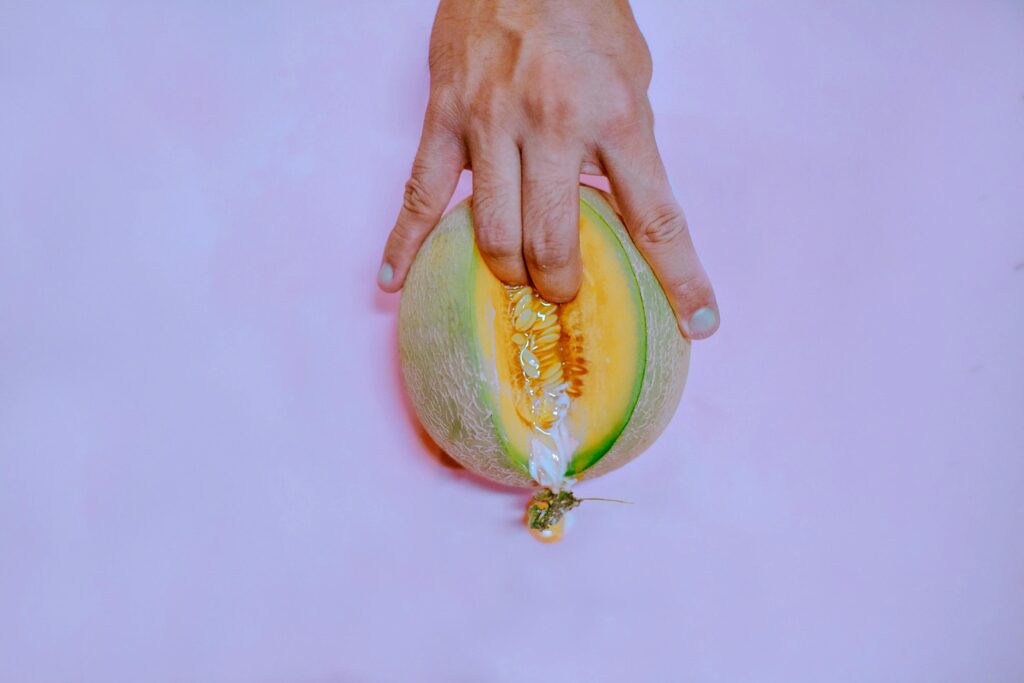I get this question so often. It’s a huge block for people.
“If it doesn’t have to be sexual, why don’t you call it something else? I just picture masturbation straight away.”
Okay, here it is:
Self-Pleasure can encompass masturbation, yes, but it is not the same as masturbation.
As Dane Tomas graciously said recently, “Self Pleasure is what grown-ups call masturbation”. This is because it encompasses a whole lot more than simply rubbing your genitals like horny teenagers aiming for an orgasm.
So, what exactly is self-pleasure? Let’s find out in this post.
What is Self-Pleasure?

Firstly, it’s about being with yourself.
It’s about opening your body up to more feeling and aliveness resulting in more pleasure (not just in sex, but in all of life) through finding the pleasure in all the sensations, through the densities and truth of what’s going on in your body; not manufacturing it through force or external stimulation (masturbation). We aren’t working with a goal; we are simply being with the body.
Self Pleasure vs Masturbation
At first glance, self-pleasure and masturbation might seem like the same thing, but they’re not. While they can overlap, the intention, depth, and experience behind them are completely different.
Masturbation is goal-oriented
Masturbation, as most of us know it, tends to be a quick, goal-driven act. It’s often focused on:
- Reaching orgasm as fast as possible
- Releasing tension or stress
- Seeking immediate gratification
There’s nothing wrong with that, as it can be fun and satisfying. But it usually involves little to no awareness of the rest of the body, breath, or emotion. It’s often done on autopilot, sometimes even disconnected from true desire.
Self-pleasure is present-oriented
Self pleasure, on the other hand, is about being with your body, not racing to the finish line. It’s a slow, intentional practice rooted in curiosity and self-connection.
With self-pleasure, you might:
- Breathe more deeply
- Explore your entire body, not just your genitals.
- Tune into sensation without rushing
- Allow emotions to surface and be felt.
- Move intuitively, following what feels good in the moment
It’s less about climax and more about cultivating awareness, aliveness, and healing.
How to Practice Healing Through Self-Pleasure

Suppose you contract or feel fear around the words “Self Pleasure”, or around the idea of masturbation. In that case, there is a key indicator right off the bat that you hold suppression & conditioning around sexuality (that is NOT YOURS). The name is incredibly powerful for the cause; it promotes reflection and conversation, at the very least. If it triggers you, it’s an indicator it has something to offer you.
We are heavily conditioned to think sex is wrong, private, dirty, shameful, and embarrassing. And there is an inherent innocence that this conditioning has taken away from us. But we are sexual beings. It’s how every single one of us arrived here. Ask yourself:
- Why are we such prudes about sex?
- Why do we fear expressions of sex and pleasure?
- Why are we so scared of liberation?
- Where did all this belief come from?
Self-pleasure is an act of reclamation.
It allows you to:
- Explore your body with compassion, not criticism
- Release the shame that was never truly yours.
- Rediscover desire in a way that feels empowering, not performative.
- Feel safe in your skin again.
As you slow down and listen to your body’s cues, you begin to trust it. And trust leads to healing.
Letting emotions flow through
Unlike performance-based pleasure, self-pleasure creates space for emotional release. When you allow yourself to move slowly and intentionally, you may find that buried emotions like sadness, joy, anger, or even longing begin to surface.
Instead of pushing them down or distracting yourself, you meet them with presence. This is where the healing happens in the simple act of not abandoning yourself.
Unlearning conditioning around sex and shame
Most of us have been taught that pleasure is something to hide, something to feel guilty about, especially when it comes to our bodies. Self-pleasure challenges this narrative. It says:
- Pleasure is safe.
- Pleasure is your birthright.
- Your body is your home, not a battleground.
The suppression of sexual energy has caused a whole lot of problems in today’s world. Self-Pleasure is about nothing more than reconnecting with who we are beyond the layers shaped by society.
So instead of getting hung up on what it’s called, let’s ask what it can offer us.
Emily is a graduate of the Institute of New Paradigm Intimacy. She is an erotic priestess and poet in devotion to eros, embodiment, and sex magick. She inspires humans to unearth their unique sexual expression.
Connect with Emily here: https://www.instagram.com/em.ily.kim/
+ show Comments
- Hide Comments
add a comment